Double Face (1969)
Directed by: Riccardo Freda
Written by: Edgar Wallace, Lucio Fulci, Paul Hengge, Riccardo Freda, Romano Migliorini
Starring: Annabella Incontrera, Christiane Krüger, Günther Stoll, Klaus Kinski
AKA A DOPPIA FACCIA, DAS GESICHT IM DUNKELN, PUZZLE OF HORRORS, LIZ AND HELEN
Italy/West Germany
AVAILABLE ON BLU-RAY: JUNE 24TH, from ARROW VIDEO
RUNNING TIME: 91 mins
REVIEWED BY: Dr Lenera, Official HCF Critic
Rich industrialist John Alexander is married to Helen, who openly carries on an affair with Liz, though he can’t talk because he’s sleeping with his secretary Alice. Then one day someone wearing black gloves [of course] tampers with Helen’s car, which sends her careening to a fiery and seemingly fatal end. Upon returning from a much needed holiday to his home in London, he finds the pretty, enigmatic Christine crashing at his place. When she takes his house keys, he follows her to a club where he’s shown a blue movie, and in it is not just Christine – but the supposedly dead Helen….
Though it may not initially seem like it, Double Face fits in with my monthly [well, give or take a week or two] Lucio Fulci series that I’ve been doing for quite a while, seeing as the man was involved with the writing of the film, though to what extent isn’t clear. Fulci didn’t like the finished product, claiming that director Riccardo Freda had, “completely crushed it down to a pulp, at that time he just didn’t care anymore”, which might be why his Perversion Story the same year was partly a reworking of elements from this film. In any case, I was also looking forward to watching Arrow’s Blu-ray of Double Face is I rather enjoyed Freda’s semi send-up giallo The Iguana With The Tongue Of Fire which they brought out earlier this year. This film belongs to that phase of gialli when a bloody murder every now and again hadn’t yet become the norm [you can thank the sensational success of Dario Argento’s The Bird With The Crystal Plumage for that] and mystery, intrigue, suspense and sex were considered to be enough. And indeed, as long as you don’t expect much violence, the very sleazy for its time Double Face provides a reasonably fun time, and may even keep you guessing. While low on action, the plot is sufficiently involving to maintain interest, and it also has a remarkably restrained, yet still rather good, performance by that nutter [and I say that with the greatest of respect] Klaus Kinski. And as for Freda, his heart may not have been in it resulting in some carelessness, but certain sequences certainly show some flair and inspiration.
The original story was developed by Fulci, Romano Migliorini and Giambattista Mussetto, while the screenplay is credited to Freda and Austrian-born Paul Hengge, though some say that Fulci wrote the first treatment and that the name of Hengge was just present because it was an Italian co-production with Germany. Kinski initially refused to be in the film, not wanting to play another psychopathic character, but Freda convinced him to take the role after telling him he would be a victim as well. The two didn’t get on though and Kinski walked. Freda then announced that he was shooting scenes with a Kinski double, which was enough to make Kinski come back. Shot in London, Rome and Berlin, Double Face was released to reasonable box office except in Germany. There, it was sold as a krimi, a German subgenre consisting of thrillers inspired by the writing of Edgar Wallace, and was entitled Das Gesicht im Dunkeln in an effort to convince people that it was based on Wallace’s novel A Face In The Dark. Despite this, it flopped so hard that Rialto stopped their Wallace film series until the success of The Bird With The Crystal Plumage, which was advertised there as being based on a story by Wallace’s son Bryan Edgar, led to them starting it again. Information about the various cuts of the film isn’t clear or consistent, but we do know that the German version was 11 minutes shorter than the Italian cut, while a 1975 French release entitled Liz et Helen added hardcore porn scenes involving actress Alice Arno as Chaleur et Jouissance while probably cutting other material, while in many other countries censorship caused much trimming. It wasn’t released in the United States until 1992 on TV as the cut-for-sex Puzzle of Horrors.
Speeding, screeching cars hurtle down roads in the opening which throws us into a car chase finishing when the first car crashes into a train. Our ‘hero’ John, who we’ve already glimpsed as a passenger in the pursuing car, tells us that: “It had ended up tragically and yet it had all been planned down to the minutest detail”. Starting with something that happens much later on is odd enough, but this one also implicates its hero immediately, before we’ve even found our footing. And then the main title piece is rhapsodic piano music, which in unusual even in a genre notable for the amount of inventive, strange sonorities that composers were allowed to come up with. Next up is some appalling [even for the time, it’s rubbish, just look at those shiny blue outlines] back projection as we see John and Helen coming down snowy slopes on a sleigh and sitting on the snow, and shots at a racecourse a minute later look about twice as old as the film is! But things then settle down as we see the odd state of John and Helen’s marriage, and learn that Helen’s father Mr Brown is the owner of the big company [which is called Brown & Brown but amusingly always just referred to as “The Company”] that John works for, and that Helen’s mother left her a 90% stake in it, and that John gets everything if she dies. Uh-ha. It’s odd though that, after Helen has died in her very poorly staged car crash with jump cuts from a real car to a poor model one [did we really need the the line “the body is beyond recognition” which immediately sets us thinking?] , the idea of John being a suspect is pretty much forgotten until nearer the end of the film, some moments when he’s violently threatening women [when they just won’t give him the information that he needs] resulting. More tension would have resulted in this ambiguity had been fore-fronted more.
Now I would imagine that most men would be only be too happy to return home to find a nice blonde in the shower who virtually comes on to them immediately, but then John has recently lost his wife. Christine is one of those totally emancipated, sexually free female characters which often turn up in these films, very much male fantasy figures though a case can be, and has been, made for them being progressively feminist instead. Christine leads John to a club full of hippies who dance, and sometimes strip, to awful songs while the camera stays and stays with them [especially the stripping women] for ages. The view of counterculture is predictably conservative and lacking even the slight wryness of Fulci’s A Lizard In A Woman’s Skin. Was watching porno films really a favourite recreational activity among the “turn on, tune in and drop out” crowd. John is shown one movie and spots Christine getting it on with a woman who, despite the veil over her face, seems to be his wife judging by the ring and scar she sports – though this leads to an amusing twist on a familiar movie situation. You know the one, when someone brings back the cops to where he’s seen bad things, been taken, whatever – and everything has changed, making our hero look like an idiot. Here, John shows the film to the main policeman on the case Inspector Stevens, only to find that the ring and scar are no longer in it. What’s happened? Is his wife alive or dead? Or is it a plot to frame him? Peter the projectionist immediately seems to be a person who’s up to no good, but we’re not sure about Christine either, especially when she drugs John with something called Senex which is one of those movie drugs which only take a couple of minutes to take effect. Christine also leaves the bottle too, which is strange – though not as strange as the fact that there’s no visible J % B whisky in this film, despite the amount of drinking in it.
It doesn’t hang together very well as a story. As is sometimes the case, the villainous plans probably only had a 50% chance of actually succeeding, something which I would have thought would make most criminals weigh the odds and decide to give up. One is left with some questions, such as why the porno film was made in the first place, and the eventual fate of one major character. The climax in a cathedral is rather thrown away, even though you’d have thought that Freda, with his Gothic sensibilities that made The Horrible Dr Hitchcock [a scene from which he recreates here, though the “familiar music being played by a possible ghost in a house” gag is certainly older] and The Ghost so good, would have exploited such a setting. Some of the scenes in John’s mansion with its baroque interiors fare much better in this regard though, and cinematographer Gabor Pogany uses colour well in scenes here and there, notably the scenes in a hippy club and a haunting bit when John is stalked by a man with a cane and the streets are bathed in blue, yellow and red, as if no less than Mario Bava had been on hand here. Shaky handheld camerawork is used for a moment when John is beaten up [though he seems relatively okay immediately afterwards], and then there’s that odd montage that almost seems to come from another film, where extreme close-ups of John’s face as he drinks in various London booze dens are inter-cut with swirling neon signs of various establishments, though it’s the only scene though that exploits the main London setting, and contains a goof so glaring that even I was able to spot it – John is bareheaded and certainly not carrying a hat when he’s outside, yet is seen with one on his head when he’s indoors.
In general Freda seems to alternate between being involved with the material and not seeming interested at all, something I’ve noticed before. As for the score by Nora Orlandi, I’m not sure it entirely works, but kudos for being different. The score is largely for piano that sounds out of tune, and much of it is based on a theme in three-time that also forms a song heard several times, though there are some strange orchestral flourishes too, eerie use of choir, a more traditional giallo-type piece for one of the London scenes, and even a piece just for guitars. The strongest aspect of Double Face though could very well be Kinski. He’s renowned for going over the top, and there were scenes in this film where I fully expected him to really go for it, but, as he did in his portrayal of Dracula [one of the best ever], he holds back. Seeing his character’s dead wife come back to life in a porno film, Kinski’s face takes on a haunted look as if he’s actually seem a ghost, even though it’s a moment where we might reasonably expect the familiar raving, eye-rolling and tooth-gnashing. Even though we hardly ever seem to be hearing their actual voices, most of the cast does well, trying to take the proceedings seriously. Despite some poor moments especially in the early part of the film, so did I for much of the rest of it, even there’s not really enough in it to make it stand out among other films of its kind.
Arrow’s Blu-ray of Double Face comes from a restoration by L’Immagine Ritrovata, but as I’ve mentioned on other reviews the company really seems to have got its act together and any yellow seems entirely intended. It seems that previous discs of the film were cobbled together from different sources, but this one has no such obvious discrepancies. Grain is well managed except for the English opening titles, the often interesting colour schemes can really be appreciated, and there’s plenty of detail even in close-ups. A fine restoration that may have been hard to carry out considering the several differing versions. I watched most the film with the English dub. English often seems to be spoken and the voicing is quite good. I sometimes switched over to the Italian track, and unusually the dialogue is almost the same.
It had been a while since I’d heard an audio commentary from the old master Tim Lucas. This one, as he states at the beginning, was done without a locked down print and as a response to people asking him to take a less scene specific approach, though instead of the latter you get huge chunks of him going through the story in detail. But you get plenty of background information as well as a discussion about the krimi films which I knew little about. An English translation of the rather appropriate song lyrics is a highlight, and – yes! – that headboard did also appear in some Bava films, I was right!
Having seen two featurettes that have featured this guy, I’ve come to look forward to DJ Lovely Jon’s contributions which combine great knowledge with great passion, and I found The Many Faces of Nora Orlandi a really interesting overview of the life and work of a composer who goes under several names. Virtually a lone female in what was a male dominated industry, and pretty much only a name to me, she was a member with her sister on a long-lasting choir called the Four Plus Four as well as doing film scores. Of course the Double Face score is looked at in detail, especially one particular track that uses the music very interestingly. Juicy music clips appear throughout. Very good – but of course I expected that.
7 Notes for a Murder has Orlandi herself discuss her life and career in a very freewheeling discussion which sometimes returns to an earlier subject or suddenly goes somewhere else, but she’s great value, still full of passion and energy, and pretty candid too. She plays bits from some of her music, tells of how she got into doing film music because the director Italo Zingarelli, heard her play one of her pieces on the piano, and says that Freda was both “funny and mean”. The Terrifying Dr. Freda has Amy Simmons looking at Freda’s gialli and horror films [with a few plot giveaways so be warned!] and making a case for this director being more better and more important than he’s regarded as, which is usually as the co-creator [with Bava] of the Italian horror film with I Vampiri and little else. I’m not totally convinced, but I’m willing to explore. And finally the image galleries, which I rarely mention, seem especially good.
Probably a minor giallo but quite good fun anyway. Recommended, though probably only for fans.
SPECIAL EDITION CONTENTS
*Brand new 2K restoration of the full-length Italian version of the film from the original 35mm camera negative
*High Definition Blu-ray (1080p) presentation
*Uncompressed mono 1.0 LPCM audio
*Original English and Italian soundtracks, titles and credits
*Newly translated English subtitles for the Italian soundtrack
*Optional English subtitles for the deaf and hard of hearing for the English soundtrack
*New audio commentary by author and critic Tim Lucas
*The Many Faces of Nora Orlandi, a new appreciation of the varied career of the film’s composer by musician and soundtrack collector Lovely Jon [43 mins]
*New video interview with composer Nora Orlandi [32 mins]
*The Terrifying Dr. Freda, a new video essay on Riccardo Freda’s gialli by author and critic Amy Simmons [19 mins]
*Extensive image gallery from the collection of Christian Ostermeier, including the original German pressbook and lobby cards, and the complete Italian cineromanzo adaptation
*Original Italian and English theatrical trailers
*Reversible sleeve featuring original and newly commissioned artwork by Graham Humphreys
FIRST PRESSING ONLY: Illustrated collector’s booklet featuring new writing on the film by Neil Mitchell

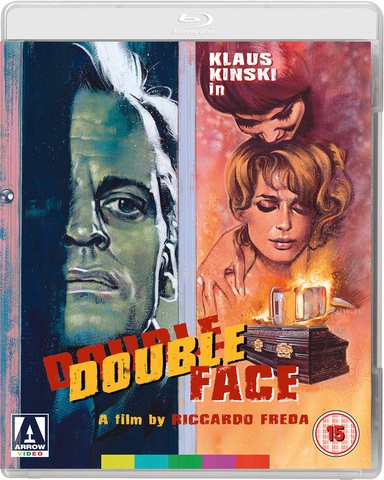
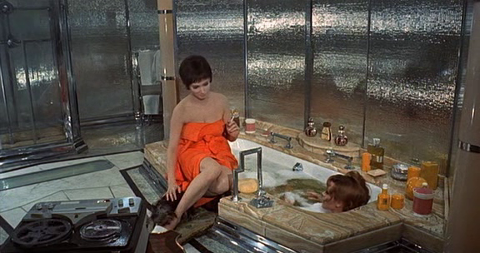
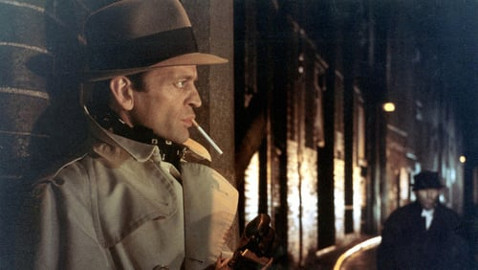





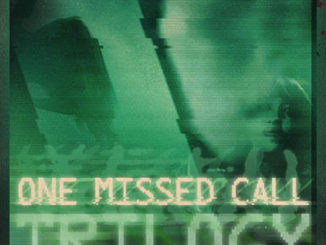
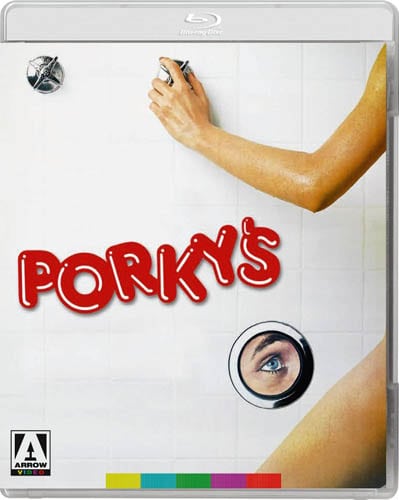
Be the first to comment